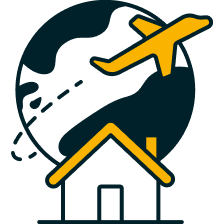

Struggling to Breathe Easy? Discover Septoplasty in Thailand.
Take a step towards better breathing and nasal health with Septoplasty surgery. This procedure corrects a deviated septum, improving airflow and relieving any obstruction, congestion, or breathing issues you may have. Experience the exceptional expertise of Thailand’s leading plastic surgeons, all at affordable prices and with a friendly and welcoming approach. Choose to recover in the bustling city of Bangkok or the tranquil beauty of the beach, ensuring a balanced and healthy outcome for your well-being.
This procedure starts at just:
5,000 THB
5,000 USD* I EUR 10,000*

Explore your Options!
The price provided is for this procedure, but other methods are available. A comprehensive consultation with a doctor will help identify the best treatment plan for you.
* Fluctuations in exchange rates may impact the final cost of services.



Learn even more about this procedure in our FAQ section
Benefits of a Septoplasty Surgery


- Correct a deviated septum, improving nasal airflow and breathing.
- Alleviate nasal obstruction, congestion, and difficulty breathing through the nose.
- Improve sleep quality for individuals with obstructed nasal passages.
- Reduce snoring for individuals with nasal obstruction-related snoring.
- Improve nasal airflow, resulting in less nasal dryness and discomfort.
- Allow for a quick recovery compared to more extensive nasal surgeries.
Risks and Considerations of a Septoplasty Surgery
Mitigate risks and optimize results by selecting a qualified surgeon and openly sharing your medical history. Rely on ImagineHealth for comprehensive assistance in minimizing potential risks throughout your healthcare journey.


- Be aware of the risk of infection at the surgical site.
- There is a possibility of excessive bleeding during or after the procedure.
- Potential perforation of the septum, the wall between nasal passages, is a concern.
- Temporary or permanent alterations in the sense of smell may occur.
- Uneven appearance of the nostrils post-septoplasty, known as nostril asymmetry, is possible.
- The septum may shift back to its previous position, leading to the recurrence of deviation.
- General risks associated with anesthesia administration, known as anesthesia risks, should be considered.
- There is a possibility of dissatisfaction with the cosmetic or functional results.
- Important Information
The information provided on this page should serve as a helpful guide, not as direct advice from ImagineHealth. You must conduct your thorough research on surgery and consult with a General Practitioner. It is essential to be fully informed before making any decisions.
Experience an Unparalleled Septoplasty Surgery in Thailand
Elevate your aesthetic journey with ImagineHealth. As independent facilitators, we connect you with top-tier surgeons and hospitals for a seamless experience. Based in Bangkok, we provide dedicated support from consultation to post-operative care, ensuring a personalized and expert-backed breast augmentation journey that prioritizes your well-being.

Begin Your Journey With
ImagineHealth Effortlessly
01
Contact Us
Contact us via website, email, or phone – our team is here in Bangkok to ensure you have a smooth and seamless experience.
02
Procedure Plan & Travel
We will define a tailored health plan with our treatment partners based on your desires and health information.
03
Become Your Dream Self
Enjoy the procedure and recovery in Thailand’s beauty, letting stunning landscapes and beaches enhance your health journey.
Take Advantage of what Thailand has to
Offer for Your Perfect Look and Health
Upgrade Your Medical Experience with a Memorable Getaway
Turn your medical procedure into a rejuvenating holiday in beautiful Thailand with ImagineHealth. Experience post-operative recovery in the perfect setting with picturesque landscapes and world-renowned hospitality. Let us seamlessly blend your transformative journey with a memorable vacation, so you can return home fully recovered and rejuvenated.


Elevate Your Transformation With Exclusive Regenerative Aesthetics Add-Ons
ImagineHealth seamlessly integrates Regenerative Aesthetics into your plastic surgery, elevating your results and recovery. Our holistic approach in Thailand ensures exceptional surgical care and the latest in regenerative medicine for a truly transformative experience.
Frequently Asked Questions About:
Septoplasty
Septoplasty surgery corrects a deviated nasal septum, the tissue that separates your nasal passages. A deviated septum, often caused by injury or present from birth, can obstruct airflow and cause various issues such as restricted breathing, snoring, sleep apnea, nosebleeds, facial pain, headaches, and sinus infections. Septoplasty procedure is designed to straighten the septum, improving nasal airway function and alleviating symptoms. Contrary to rhinoplasty, which focuses on correcting cosmetic issues of the nose, septoplasty is performed to address structural problems.
Patients may qualify for a septoplasty if they have a deviated septum that causes breathing problems. If you struggle with excessive snoring disrupting your sleep, you should consider undergoing this procedure. Ideal candidates are healthy nonsmokers. Ensure chronic conditions like hypertension or diabetes are managed by a healthcare provider before considering surgery.
Septoplasty alone will not alter the shape of your nose. However, when combined with a cosmetic rhinoplasty, it can potentially change the appearance of the nose. It should be noted that cases where the septal cartilage is severely deviated and the straightening of the septum affects the nose’s appearance are less frequent
A septoplasty typically takes 30 to 90 minutes and is done on an outpatient basis, allowing you to return home the same day. The procedure can be performed under general anesthesia or local anesthesia with sedation. Your surgeon will make a small incision inside the nasal cavity to access the septum. This can also be done through an open septoplasty, where an incision is made across the columella and the skin and mucous membrane are lifted. The septum will then be straightened and the incision closed using dissolvable sutures.
After surgery, most people require about a week of recovery time. Discomfort can be managed using ice packs, saline rinses, and over-the-counter pain medication. After a week, stents will be removed, which may cause a sensation of gentle tugging but should not be painful. It is important to keep your head elevated, especially when sleeping, for at least the first week. Additionally, smoking, hot drinks, spicy food, and alcohol should be avoided for one to two weeks. Blowing your nose should be avoided until the surgeon considers it safe. Bleeding and discharge may still occur during these initial weeks, and physical activity should be limited for several weeks after surgery.
Once the swelling has subsided, you expect an improvement in your ability to breathe. However, patients undergoing functional nasal surgeries like deviated septum correction and turbinate reduction may experience restricted nasal airflow for one week post-surgery. During the second week, there still may be some breathing limitations. However, by the third week post-surgery, you can expect significant improvement in your breathing.
You will experience improved breathing within a week of starting treatment, with progress continuing for months. By six months post-surgery, expect significant healing and greatly improved breathing. The results should be permanent, with very rare cases of the septum reverting back to its original position.
Septoplasty is generally a safe procedure, with a low risk of serious complications. However, like any surgical intervention, there are potential risks involved. These include bleeding, infection, and rare adverse reactions to anesthesia. In some rare instances, patients may experience a decreased sense of smell or discoloration of the nose. Additionally, there is a slight possibility of developing a perforation or hole in the septum. Should this occur, additional surgery may be necessary to repair the septal perforation. Rest assured, at ImagineHealth, we prioritize your safety and take proactive measures to minimize any potential risks.
- Sources and Additional Information
- Dąbrowska-Bień, Justyna, et al. “Complications in septoplasty based on a large group of 5639 patients.” European Archives of Oto-Rhino-Laryngology 275 (2018): 1789-1794.
- Delaney, Sean W. “Evolution of the septoplasty: maximizing functional and aesthetic outcomes in nasal surgery.” Mathews Journal of Otolaryngology 1.1 (2018): 1-9.
- Hong, Chris J., et al. “Open versus endoscopic septoplasty techniques: A systematic review and meta-analysis.” American journal of rhinology & allergy 30.6 (2016): 436-442.
- Kemal, Özgür, et al. “Impact of functional and aesthetic factors on patient satisfaction in septorhinoplasty.” Turkish Archives of Otorhinolaryngology 60.1 (2022): 36.
- Sedwick, Jack D., et al. “Caudal septoplasty for treatment of septal deviation: aesthetic and functional correction of the nasal base.” Archives of facial plastic surgery 7.3 (2005): 158-162.
- Watters, Carolina, Sabrina Brar, and Sharinie Yapa. “Septoplasty.” StatPearls [Internet]. StatPearls Publishing, 2022.



